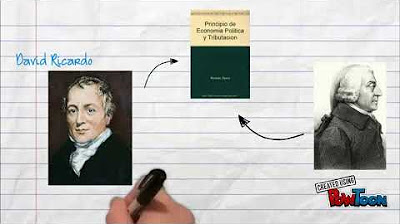Eco 155: Principles of Macroeconomics Class 1
Summary
TLDRIn this lecture, the professor introduces Adam Smith as the father of economics and his seminal work 'The Wealth of Nations,' published in 1776. The discussion explores the shift from mercantilism to Smith's belief in the 'invisible hand' guiding the market. The lecture delves into the economic problem of resource allocation and the concept of scarcity, distinguishing between economic goods and bads. It also touches on positive and normative economics, emphasizing the importance of testable hypotheses over value judgments in economic analysis.
Takeaways
- 🎓 The 'father of economics' is Adam Smith, a Scottish economist known for his book 'The Wealth of Nations' published in 1776.
- 🏛 Adam Smith observed differences in wealth between Scotland and England, which led him to question the prevailing economic theories of his time.
- 💰 Mercantilism, the economic system before Smith's theories, believed that a nation's wealth was determined by its stock of gold and silver, emphasizing exports.
- 🔄 Adam Smith proposed a different view, suggesting that wealth comes from something other than just gold and silver, introducing the concept of the 'invisible hand' in the market.
- 🇺🇸 The release of 'The Wealth of Nations' coincided with the Declaration of Independence, reflecting a similar sentiment of individual freedom and self-governance in both political and economic realms.
- 🛠️ The 'invisible hand' concept posits that market forces will naturally reward good products and services while punishing poor ones, without the need for excessive government regulation.
- 📚 Economics is defined as a decision science, focusing on how to allocate limited and scarce resources to produce goods and services.
- 🚫 Scarcity is a fundamental economic concept, meaning that there are not enough resources to fulfill all of people's wants and needs, necessitating choices and trade-offs.
- 📈 Economics involves making decisions about production, distribution, and consumption of goods and services, given the constraints of limited resources.
- 🍕 Goods are defined as things that are scarce and desirable, while economic 'bads' are undesirable outcomes, such as crime, illustrating that the value of goods can be subjective.
- 📊 Positive economics focuses on 'what is', making testable statements, whereas normative economics is about 'what should be', involving value judgments and untestable hypotheses.
Q & A
Who is considered the father of economics and what significant work did he publish in 1776?
-Adam Smith is considered the father of economics, and he published 'The Wealth of Nations' in 1776.
What is the economic system that Adam Smith was challenging with his theories?
-Adam Smith was challenging the economic system of mercantilism, which believed that a country's wealth was determined by its stock of gold and silver.
How does mercantilism define a country's wealth?
-Mercantilism defines a country's wealth by the amount of gold and silver it has, advocating for a positive balance of trade through exports to bring in these precious metals.
What is the 'invisible hand' concept introduced by Adam Smith?
-The 'invisible hand' is a concept introduced by Adam Smith that suggests that the self-interest of individuals in a free-market economy will guide their actions to promote economic benefits for the whole society.
How does the 'invisible hand' work in the context of product quality and business survival?
-The 'invisible hand' works by allowing well-made products to succeed in the market while poor-quality products fail, without the need for excessive government regulation.
What is the economic problem that economists seek to address?
-The economic problem that economists seek to address is how to allocate limited and scarce resources to produce the goods and services that society desires.
What is the difference between economic goods and economic bads?
-Economic goods are things that are scarce and desirable beyond what is freely available, while economic bads are things that are undesirable or unwanted, such as crime.
Can you explain the difference between positive and normative economics?
-Positive economics is concerned with what is, making statements that are testable and based on observation. Normative economics, on the other hand, is concerned with what should be or ought to be, involving value judgments and opinions.
What is an example of a positive economic statement from the script?
-An example of a positive economic statement is 'The federal budget deficit is 300 billion dollars,' which is a testable fact.
What is an example of a normative economic statement from the script?
-An example of a normative economic statement is 'The federal budget deficit should be smaller,' which is a value judgment and not testable.
How does the script differentiate between scarcity and the concept of economic goods?
-Scarcity refers to the fact that there are insufficient resources to produce all the goods and services that people want, necessitating choices. Economic goods are those specific items or services that are scarce and desired by individuals.
Outlines

This section is available to paid users only. Please upgrade to access this part.
Upgrade NowMindmap

This section is available to paid users only. Please upgrade to access this part.
Upgrade NowKeywords

This section is available to paid users only. Please upgrade to access this part.
Upgrade NowHighlights

This section is available to paid users only. Please upgrade to access this part.
Upgrade NowTranscripts

This section is available to paid users only. Please upgrade to access this part.
Upgrade Now5.0 / 5 (0 votes)





